4 Toilet Venting Options for Reduced Lingering Odor
Author: Omar Alonso | Editor: Omar Alonso
Review & Research: Jen Worst & Chris Miller
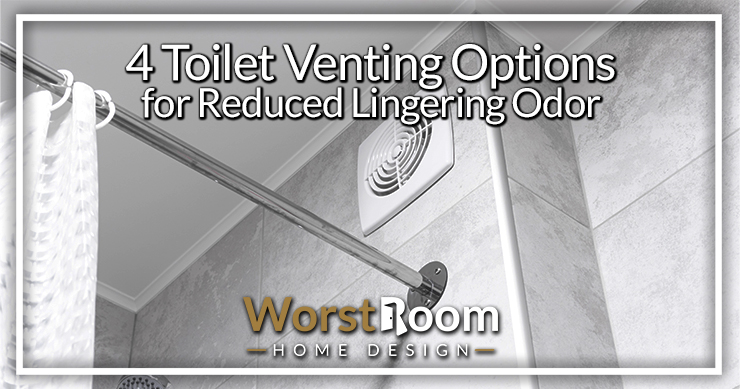
You've realized you need to know what the various toilet venting options are. Toilet venting is a bathroom installation that must be installed correctly to ensure proper airflow. It could be through the roof, gravity vents, or walls. You can also consider going with a direct venting system.
4 Toilet Venting Options
It is best to consider the pros and cons of each to know which ways to vent a toilet you prefer or are possible in your situation. To make it easier, here is a quick guide for you on your options for how to vent a toilet.
1) Venting Through the Roof
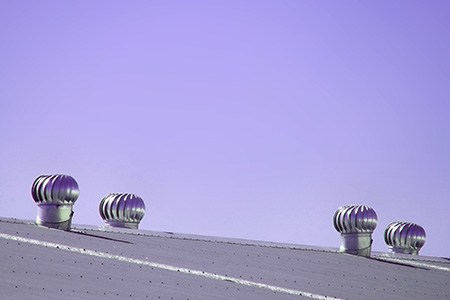
Venting through the roof is one of the most popular methods of toilet ventilation. It involves running a pipe from the toilet bowl through the roof. When flushed, pressure allows the gasses to flow through the pipes and escape through these types of roof vents.
This method has several benefits compared to other venting systems. These include no sewage water backing up into your home, requiring less piping. Venting through the roof is one of the most cost-effective toilet venting options.
The only downside is that installing toilet vents through your roof might require permission from the local authorities because it can potentially create fire hazards. This is due to combustible materials passing through attics or crawl spaces.
Keep in mind that it should be installed correctly to prevent leaks. You don't want to end up venting the bathroom fan into your attic. This ventilation option should be adequately maintained to avoid deterioration over time. Nevertheless, it is an excellent option for those on a budget.
2) Venting Through the Wall
Venting through an exterior wall is one of the most common methods, as it can be installed without significant modifications to existing plumbing systems. It is a good option because it allows air to circulate freely, reducing odor and preventing sewer gasses from entering your home.
However, it can lead to improper ventilation, sewer gas leaks, and water damage if not installed correctly. Depending on where you live, there are local and international codes that you are required to adhere to for a specific type of vent or materials to comply with the building standards.
3) Gravity Vents & Fans
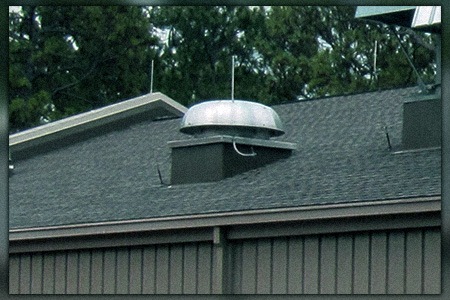
Gravity vents and fans are a popular choice as they are an efficient way to remove and avoid unwanted odor. It is also cost-efficient, easy to install, and emits little to zero noise. Among the best features of gravity vents is that it doesn't need electricity or any other energy source. It is an excellent option in places where electricity is expensive or limited.
Gravity vents work well when installed on roofs with steep slopes since there is no need for additional support structures such as brackets or frames. Since they rely solely on air pressure, there is less risk of water leakage.
Ensuring all piping and ductwork are sealed correctly is essential to prevent leaks and moisture buildup that will cause mold growth.
4) Direct Venting Systems
Direct venting is possible when a fixture’s drain is situated within 5 feet of a waste stack. We are then allowed to not have to use extra pipes (such as a branch vent, vent stack, wet vent, or stack vent) for venting since the stack itself serves as the vent.
Direct venting systems provide the necessary ventilation to ensure proper drainage and prevent sewer gasses from entering your home. They help reduce noise from toilets and other fixtures in the bathroom. This is the typical washing machine drainage option used in laundry rooms.
This option boasts a plethora of advantages compared to traditional ones, which include cost-effectiveness in installation and maintenance, improved airflow, low risk of water damage, and increased energy efficiency.
Direct venting allows more flexibility regarding toilet placement since no extra piping is necessary beyond what's already set up in the walls or floor.
However, direct venting requires more pipes if multiple fixtures are connected through one main stack vent or circuit line. With more pipes, you will need a larger space for proper installation. If you prefer a direct venting system, it is best to carefully plan where to place it and which materials to use.
Note that it is important to use high-quality materials to avoid clogging, which can result in expensive repair costs. This is the simplest of the toilet venting options if your toilet is situated close enough to the drain pipes.
Benefits of Proper Toilet Venting
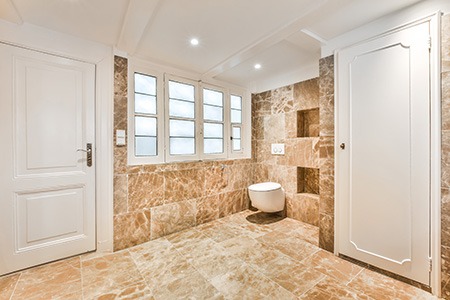
Proper toilet ventilation is essential to maintaining good air quality and reducing odors. The improved air circulation that comes with proper ventilation helps prevent too much moisture which can lead to mold growth and other health hazards.
Here are the two most important benefits of proper toilet ventilation:
Improved Air Quality
Properly venting a toilet helps ensure that fresh air enters the bathroom while stale or smelly air is exited out through an exhaust fan or pipe. This eliminates unwanted odor from lingering in the bathroom and inside the house.
An exhaust fan or proper ventilation can also reduce humidity levels in the bathroom, which prevents mold growth on walls, floors, and ceilings, as well as mildew buildup on fixtures like shower curtains and bath mats.
Reduced Odor
When a toilet isn't properly vented, it can cause an unpleasant odor to linger around. It leads to stagnant air inside the bathroom, which then causes unpleasant smells such as sewer gas.
Toilets are often used multiple times per day. So, having adequate ventilation installed will help keep excess moisture out of your bathroom environment. If not, this could be problematic for those who have allergies or asthma due to their sensitivity toward airborne particles caused by high humidity levels indoors.
FAQ’s About Toilet Venting Options
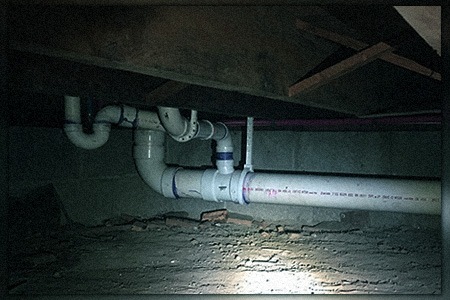
Here are a few questions that always arise when talking about plumbing ventilation. In case you have the same questions, lets go ahead and deal with those now.
What Is the Best Way to Vent a Toilet?
This depends on your preference and how your home is built. Nevertheless, here are two of the best tips to remember:
- The toilet vent pipe should extend from the roof of your home. It should be installed at least 6 inches above the highest water level to prevent backflow or blockages, with all fittings securely sealed using caulking material.
- All pipes should be sealed and secured with caulking material for proper drainage. Use appropriate piping materials such as PVC, ABS, or types of PEX pipe for durability and longevity.
In my experience, when not trying to back-fit a venting system that doesn’t exist but should, builders will nearly always opt for a vertical vent through the roof. There is likely a reason for that preference.
What Is the Code for Venting a Toilet?
To ensure that wastewater and air don't leak, there are two main vent pipes needed. The first one is connected to the drain line before it enters the house's main sewer pipe. On the other hand, the other pipeline is at least 6 inches above any flood rim level to prevent back-flows.
Both vents should be installed according to local and international plumbing codes, including height requirements and proper slope angles. Make sure that your chosen toilet vent option meets the standard approved by the local authorities for safety as well.
How Do You Vent a Toilet Without a Vent?
Toilet ventilation without a vent is possible, but it requires careful consideration. The drain line must be at least 1/8 inch per foot in slope from the toilet to its connection point with the main stack or sewer pipe. This ensures that gravity will help move waste and water through the system.
If there isn't enough of a downward slope on this line, an air admittance valve can be used. This equalizes pressure between inside and outside pipes while preventing back-flow into your home's plumbing system. If necessary, you may need to install additional vents along the drain lines leading away from your toilet for them to work properly.
Why Is My Toilet Bubbling?
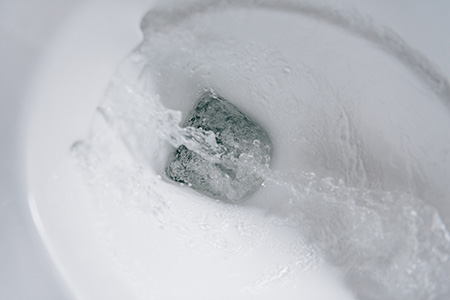
If you notice that air bubbles are rising through your toilet bowl or if the water level is rising and falling, there is a big chance that it is clogged or improperly vented. It frequently happens when you have an appliance like a washing machine or dryer.
Toilet bubbles also mean that your plumbing line is gasping for air. It is best to call a professional or have it fixed immediately to avoid further damage.
Those Are Your Toilet Venting Options
To ensure that the air in your home remains fresh and clean while preventing any unpleasant odors from spreading, proper toilet ventilation is essential. Thus, take the time to research and compare your options. Also, make sure you choose from the toilet venting options that meet your preference and are possible for your specific scenario. Some can require significant construction effort.



